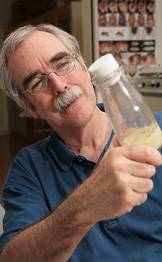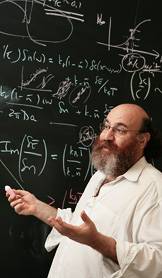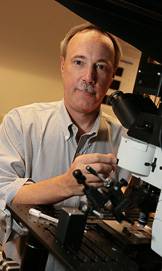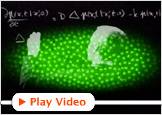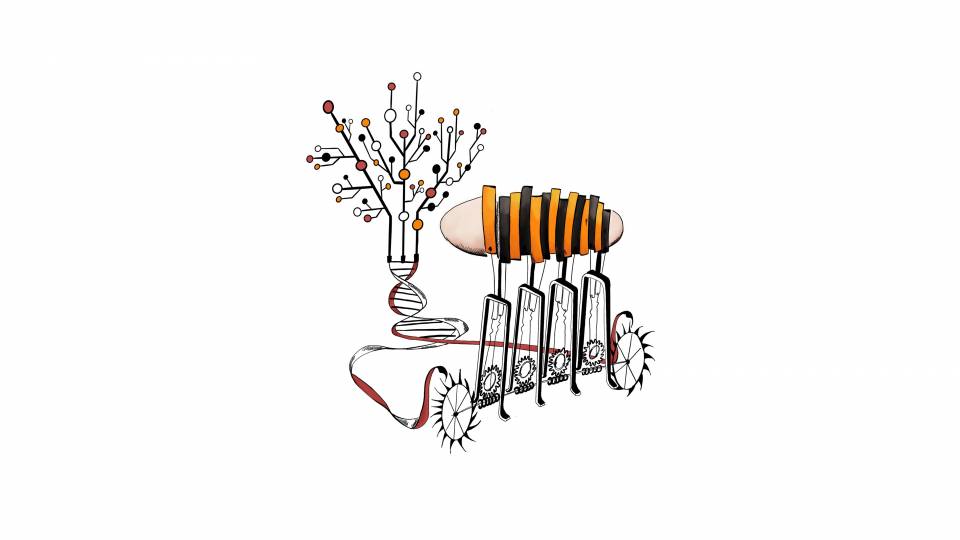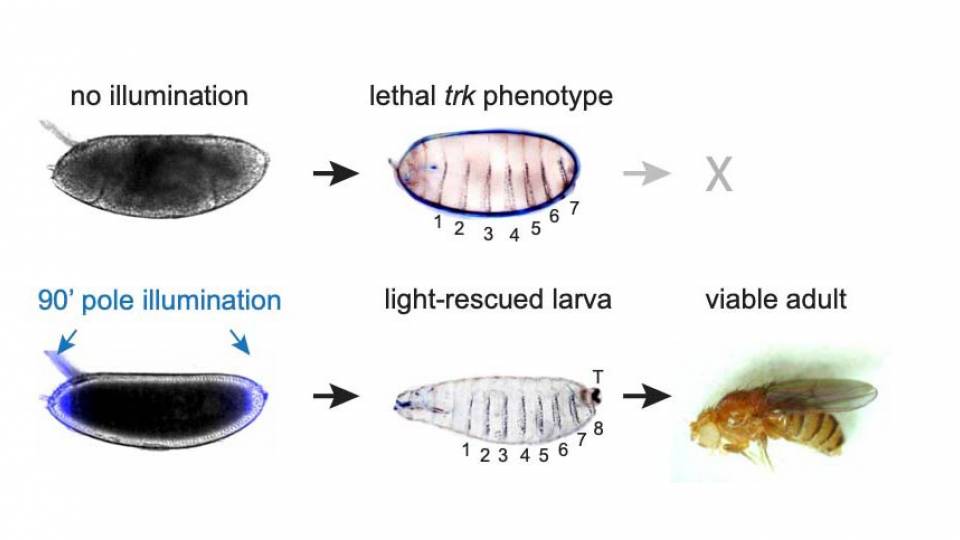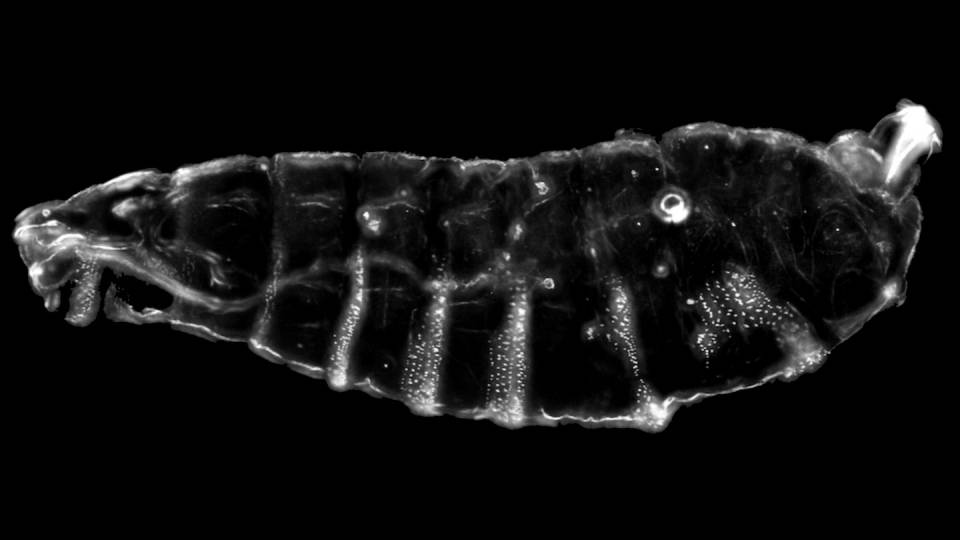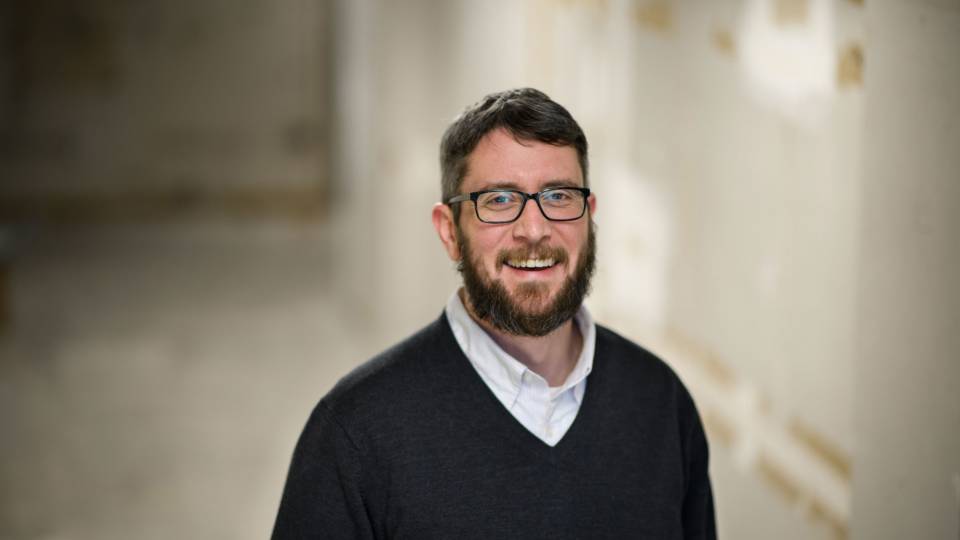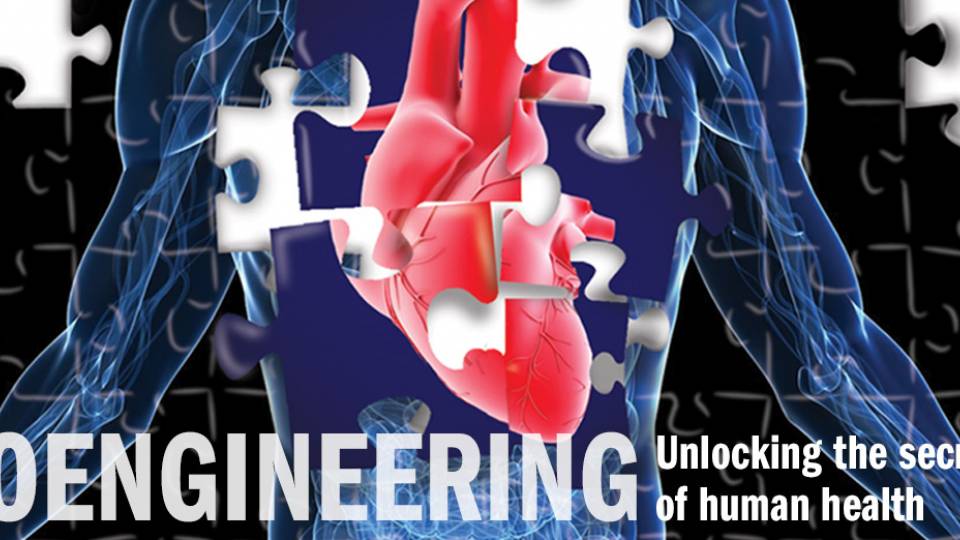From the Nov. 12, 2007, Princeton Weekly Bulletin
In the equipment-filled rooms of Princeton's Icahn Laboratory, nearly everything in sight is advancing through some stage of development. Newly hatched fruit flies crowd each other in their glass tube nurseries; a freshly modified microscope for examining the insects exposes its wire-forested innards. A recent biology paper lies open to its last page, where the list of new questions the work has inspired beckons a future research team to probe the mysteries of life even further.
For the past five years, a quartet of Princeton researchers has undergone a development of its own, trying to resolve a tricky and timeworn issue about the first moments of life by examining the fruit fly. The effort has netted the group not only a surprising discovery and two papers in a prominent scientific journal, but plaudits from scientists at other institutions, who have hailed the work as setting a new standard for the integration of physics and biology.
"This team broke down biology until they could study it with physics, and it's only through that kind of detailed analysis that we can see the complicated dynamics that go on in biological systems," said Nipam Patel, a professor of molecular and cell biology at the University of California-Berkeley. "Their work is a marriage between people who are experts in one field, but who understand and appreciate the other field. It's a nice blueprint for these kinds of collaborations."
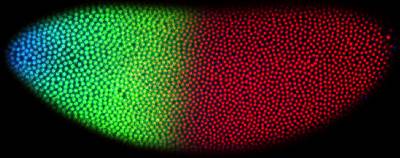
Their collaboration grew out of a quest for a different sort of blueprint -- the one that biologists have sought ever since they peered through microscopes to witness what physicist David Tank refers to as "magic": a complex animal like the fruit fly developing from a single egg, seemingly from nothing. Although most of the players in this intricate process have been identified, the precise way in which they interact to instruct an embryo to blossom from a single cell into a well-arranged collection of thousands is known only in outline.
"Textbooks basically have a cartoon of the process, with little arrows on it that show generally how the embryo develops," said Eric Wieschaus, the Squibb Professor in Molecular Biology. "But if you look at those cartoons with people who understand the world from a different perspective, you get different reactions. And maybe you get a strategy to look at things that might not have been available to you."
One thing he wanted to look at more closely was a key player in the cartoon, a protein called Bicoid. Three decades ago, Wieschaus helped identify many of the genes and corresponding proteins that give the embryo its ability to form patterns, winning him a share of the 1995 Nobel Prize in Physiology or Medicine. But the great discovery led to a new mystery.
When the mother fly makes the egg, her genetic instructions create a dab of Bicoid on the end of the egg that will become the fly's head. The Bicoid then diffuses through the gloppy liquid inside the egg, its concentration falling off with distance, until there is nearly none at the tail end. Remarkably, this apparently messy cloud of molecules is one of the primary signals that nature uses to instruct each cell on its future role -- you'll be a muscle cell, while your next-door neighbor will be a nerve -- eliciting precise, sharply defined boundaries between cells and organs.
"You want to be able to share your knowledge with your colleagues," said Wieschaus, "but just because I know the name of this protein, do I really understand how each of these cells figures out what it's supposed to do?"
Still as uncomfortable with his own hazy knowledge as he was in graduate school, Wieschaus decided it was time to look beyond biology for answers. And he forged some new working relationships in the process.
Forming a partnership
"I'll tell you a story," said William Bialek, the John Archibald Wheeler/Batelle Professor in Physics. "David Tank and I moved to Princeton about five years ago. We'd known each other a long time but had never worked together, so we thought it would be fun and different. We wanted to try something new."
Bialek and Tank, the Henry L. Hillman Professor in Molecular Biology, are both physicists by training who have felt drawn to the phenomena of life. The tools of physics -- whether the customized microscopes of an experimentalist like Tank or the mathematical wizardry of a theorist like Bialek -- are becoming as revealing in the study of a cell's nucleus as an atom's. In addition to a different toolbox, physicists also bring a different intellectual style. They search for an understanding of nature that can be formalized with equations and tested by quantitative experiments.
Math-based methods like these have allowed physicists to distinguish faint messages within many noisy environments, such as a broadcast signal within background static. Noise, Bialek thought, was likely a factor in biology as well.
"I was chatting with David in his office shortly after we arrived, and I said, 'Well, you know the way cells make decisions probably has something to do with overcoming background noise,'" said Bialek. "I mean, with all these chemical messages competing for attention, how do the cells get their information reliably? And David started talking about how he could look deep inside a cell and 'listen in' on these messages using optical microscopes."
Just at that moment, Wieschaus walked into the room and smiled.
"I recall him saying, 'Bill, I don't know exactly what you guys want to do,'" Bialek said, "'but let me tell you why you should do it with fruit flies.'"
Like lab rats, fruit flies are one of the most studied creatures on the planet. Easily grown, fast at reproducing, they have taught biologists much about how heredity works in humans. But Wieschaus knew the kind of fruit fly experiments that had made his reputation had reached their limit, and physicists were just the kind of experts who could help him reach beyond that limit to find answers.
Tank described those limits as the lack of precision understanding that mechanics have of a car.
"Looking inside a car engine and seeing all the parts moving together is critically important," said Tank. "But if you want to understand it as a system, you need to understand just how each of the parts interacts quantitatively -- you need to know more than the fact that the oil goes here. You need to know specific numbers of how much oil and when. With a few exceptions, that kind of quantitative measurement is not done in biology."
To unravel Bicoid's message, the team had to measure its effect molecule by molecule. Obtaining that much detail would take all of Wieschaus' knowledge of the fly embryo, all of Tank's power to peer inside it, and all of Bialek's ability to perceive Bicoid molecules as individual actors. It also would take a student motivated enough, and gifted enough, to synthesize it all.
A student with a dream

Thomas Gregor was a man after Bialek's own heart. As a theoretical physics student in Switzerland, he had never quite given up on his desire to study living things. When Gregor's adviser, physicist Roberto Car, accepted a faculty position that took him from the University of Geneva to Princeton's chemistry department in 1999, Gregor came with him. He met established physicists like Bialek and Tank, who had made the jump to life science, and Gregor was hooked.
"It took me awhile to work up the courage to tell Roberto I wanted to work with Bill," said Gregor, who at the time was still searching for a Ph.D. thesis topic. "But Roberto was very generous. Here at Princeton, the idea is that people should study what they love the most. I doubt I'd have been able to make the switch at any other institution."
Wieschaus had told Bialek that if he could find a student who wanted to try something interesting, he would take him into the lab personally and teach him what was needed. Bialek asked Gregor if he'd like to learn some biology with the new team.
"I thought, wow, the fly is well-studied as an overall system," Gregor said. "But we still know so little about it quantitatively. Maybe we can unravel some new things, but we need to do the right experiments to get there."
Gregor began an intense three-year journey into the far-flung worlds of fly embryos and hands-on experimental science. He would become fluent in the language of biology and adept at hot-rodding optical microscopes.
"I began working 14 to 16 hours a day," Gregor said. "But the question of how the embryo develops is fascinating. I mean, in human terms, we were trying to figure out why healthy people are always born with five fingers."
As they worked with him, his trio of advisers also tutored each other -- each in his own way was an expert and a beginner.
"Eric was a very patient tutor," Bialek recalled, laughing. "It was exciting because I was thinking about types of biology I'd never thought of before."
Tank was the right person to teach the team about microscopes -- most of the instruments in his lab he had constructed himself. And Bialek repaid Wieschaus' patience by introducing him to the math necessary to comprehend the motion of thousands of Bicoid molecules.
"Math is the basic tool for understanding biology at this level, but I've forgotten most of my calculus," said Wieschaus. "And computers have transformed calculation to the point where it's nearly beyond me. I got to run like a dog through the neighborhood with these other dogs who are doing this stuff. It was exhilarating."
Meanwhile, Gregor had found a way to create a mutant fly whose Bicoid glowed green under laser light, enabling the team to watch it move through the embryo via Tank's microscope. In the end, they discovered the numerical key to the puzzle: If a cell nucleus senses a 10 percent higher concentration of Bicoid than its neighbor does, that cell knows it will be closer to the fly's head. Near the embryo's midpoint, a 10 percent difference amounts to only a few molecules -- meaning that fly development may hinge on extremely precise counting.
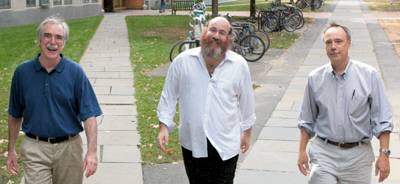
A surprise for the experts
The discovery that individual signal molecules might be important surprised Wieschaus, as it ran contrary to long-established conventional wisdom among biologists. Life is supposed to be messy and noisy. It's not supposed to have precision, especially not at the cellular level. Yet here in his beloved fly embryos was an example of extreme precision, where every molecule seemed to make a difference.
"The surprising thing is that maybe evolution is telling us that precision and accuracy are worth it," he said. "I would have thought you could get by with some sloppiness -- I mean, look at my office. But if the view that arises from this discovery is true, then maybe there is a benefit to maximizing the accuracy, the precision, the utilization of all the information, at every step of the way."
"The prevailing view has been that cells accomplish all their functions using a complicated combination of mechanisms, each one of which is rather sloppy or noisy," said Bialek. "But what we saw suggests that, in those first crucial hours of a fly's development, cells make decisions to become one part of the body or another by a process so precise that they must be close to counting every available signaling molecule they receive from the mother."
The information the team obtained is now public knowledge; it recently netted them an unusual two papers in the journal Cell -- one for the discovery, and another detailing the techniques they used to obtain it. Meanwhile, Gregor has finished his degree and taken a postdoctoral research position at the University of Tokyo, and the others are back in their Princeton labs, taking the next step in the development of their individual fields of science, which are now closer to one another because of their teamwork.
"This was an interesting side project for me, but it will definitely influence the work I do in the future," said Tank, whose main efforts are focused on understanding the dynamics of neural circuits in the brain. "Substances like Bicoid are life's most common mechanisms for producing spatial patterns in all organisms, not just flies. They help form the human brain and all over the nervous system. We studied Bicoid because it was a well-characterized model system, but the applications are universal."
Bialek has already used some of the team's results to sharpen new mathematical questions. If their theories turn out to be as accurate as they hope, Bialek said, it may allow the team not only to describe a cell's behavior, but to predict it.
"We’re trying to see if we really understand what limits the precision with which all cells make decisions to turn genes on and off," he said. "Is it possible, for example, that nature has chosen mechanisms that are in some way optimized, so we can predict how cells should work, rather than just waiting for experiments to tell us how they actually work?"
And Wieschaus, who is brimming with questions about how the mother uses Bicoid molecules, said that the team would be crazy not to want to continue their collaboration, which has already borne so much fruit.
"Seeing is still very powerful," he said, "but this work has shown that ultimately being able to measure what you have seen is the single most important strategy for understanding how things actually work in biology."
